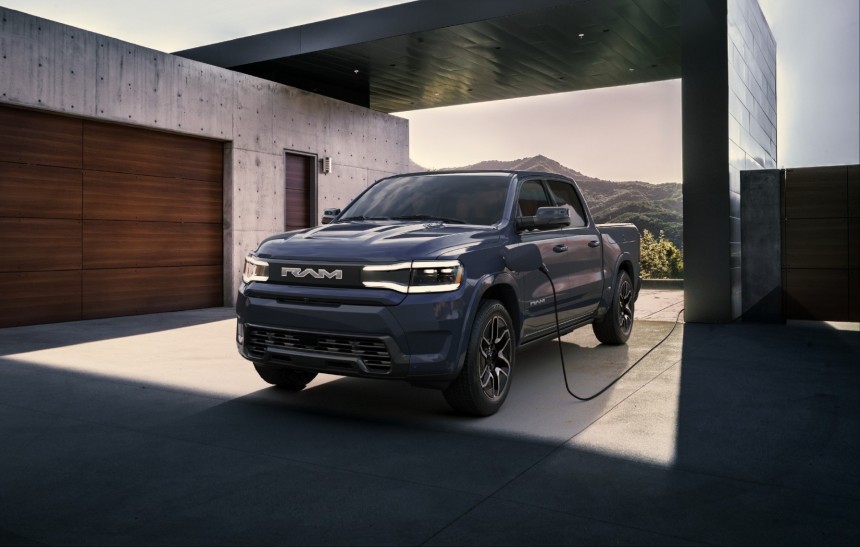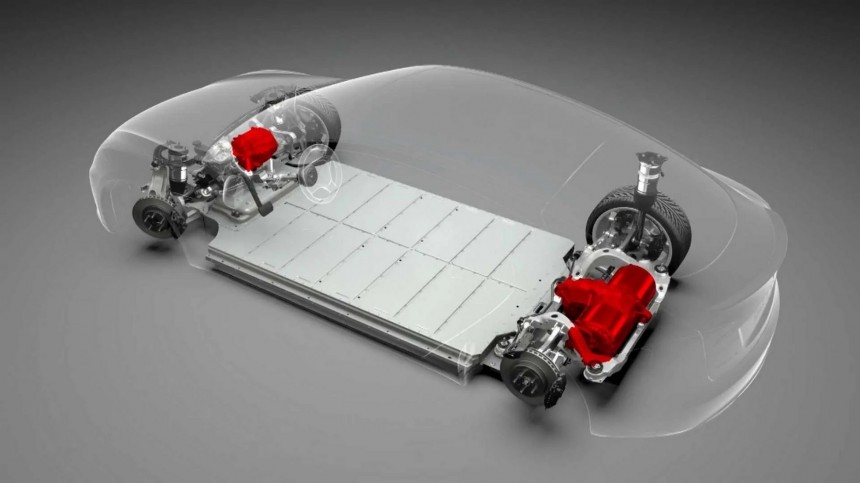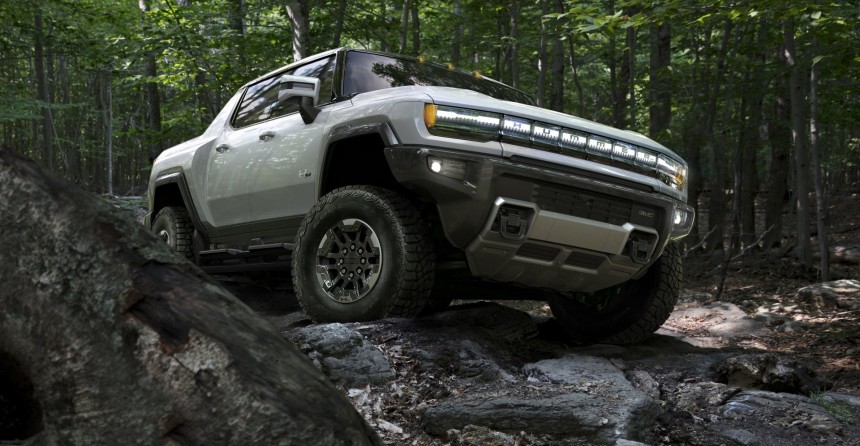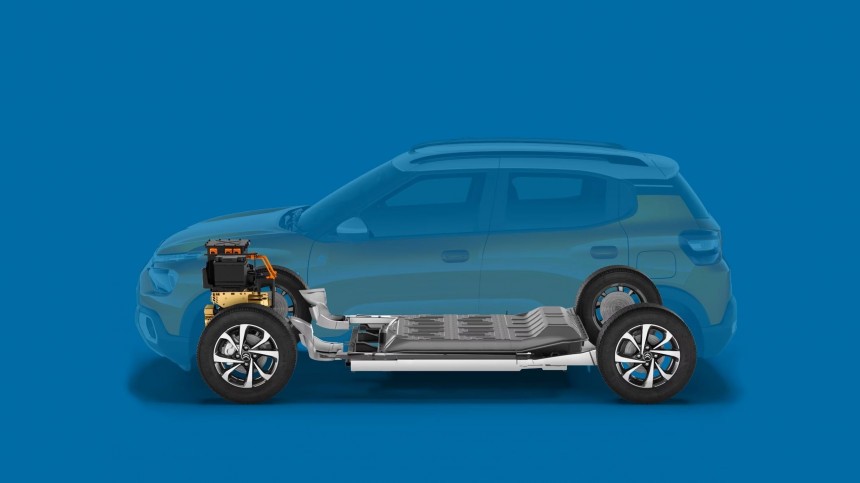Ford made a capital markets event on May 22 that wanted to prove the company no longer fits into the valuation box that comprises most other carmakers. The automotive industry is seen as a high-investment, low-margin business, and the Blue Oval brand wants to highlight how its Ford+ strategic plan made it less vulnerable to that. As crucial as that is, what stood out in the presentation was Jim Farley's concern about the dumb range strategy for BEVs.
Peter Rawlinson christened the approach that way. The Lucid CEO came up with that name using massive battery packs to contrast it with his company's pursuit for more efficiency and smaller components as the right thing to do. Although the Lucid Air has a battery pack with 118 kWh, it delivers the most extended EPA range: 520 miles. The more you can do with the same amount of energy, the longer the range. For Rawlinson, adding more cells to drive further is stupid. Farley did not frame the problem that way, but that's the perfect description for it.
Andrew J. Hawkins attended the presentation and was the only person to highlight what Farley said and to give it the relevance it has. According to The Verge transportation editor, the Ford CEO said he did not know what was "going on in this industry right now" because of the massive battery packs carmakers are putting in their battery-electric vehicles.
As Hawkins noted, Farley almost addressed the issue as he should. Predictably, the Ford CEO focused on how they may affect profitability. For him, "those kinds of batteries" will prevent automakers from making money because of how expensive they are. Farley did not go deeper into the other problems humongous battery packs pose, probably because Ford itself is working with them for the F-150 Lightning. If you are doing electric pickup trucks, they are almost unavoidable until battery tech delivers higher energy densities. GM and Stellantis just made it worse – respectively, with the Hummer EV and the future RAM 1500 REV.
The journalist reminded his readers about other profound implications inherent to these hefty battery packs, such as safety and environmental concerns. A 2-metric-ton vehicle going from 0 to 60 mph (97 kph) in less than four seconds can be a disaster in a crash, but some BEVs are already twice as heavy. Their battery packs alone can weigh as much as a compact passenger car.
When it comes to environmental concerns, Hawkins talked about some sorts of pollution that BEVs may still produce, such as particulates from tires and brakes. Regenerative braking may prevent it from the former, but electric cars are famous for needing tire replacements sooner than ICE vehicles. Being that much heavier, it is not surprising. The journalist did not mention that battery packs may also create toxic fumes if they face thermal runaways or if they catch fire for any other reason. A Model Y recently burned to the ground in California, and Tesla still did not care to tell the owner what happened to his car.
Mining also creates severe damage to the places where it happens, as I have discussed in my series of articles called "What if we are wrong about BEVs." Tesla wants to sell 20 million BEVs annually, which is twice as many cars as Toyota sells every year. Even if that was remotely possible, remember that competitors do not want to sit and watch. Now just try to figure out how many new mines we will need for all the raw materials that this sort of demand should trigger. Benchmark Mineral Intelligence attempted to calculate that in September 2022. A new mine can take years to start producing minerals.
What Hawkins did not mention is how these BEVs with massive battery packs will become junkyard material when their battery packs die. Replacing the 90-kWh components that are failing in Model S units with the error codes BMS_u029 and BMS_u018 costs around $20,000 and does not pay off. What do you think will happen with battery packs that are more than twice as big? As Hawkins said, that is not sustainable.
Not even Jim Farley believes BEVs will suit everyone, as he declared in a recent interview with Fox Business. The Ford CEO stated they were for people who have "three cars in your household and one is for short distances, running around town or a hundred, two-hundred-mile range" –as I described more recently and directly, rich people's toys.
Notice that the Mustang Mach-E's lowest EPA range is 224 miles. Theoretically, it could charge somewhere and keep driving. Farley probably did not say BEVs could do that for at least three reasons. The first is that the charging infrastructure for anything that is not a Tesla is still lame. The second is that constantly fast charging will drastically reduce the lifespan of the battery pack – which more than justifies adding my concern with massive battery pack replacements here. The third is that even fast charging takes a long time, which makes it inconvenient.
With such a restricted public for BEVs, the Ford CEO's strategy to have six business divisions makes even more sense. Farley thinks all of them will grow. In his words, anyone "pulling a fifth wheel in Wyoming" will prefer something other than an electric car. While Ford Model e will take care of the customers willing to go electric, Ford Blue or Ford Pro will sell them something more suitable for towing a fifth wheel. It is definitely a good way not to place all eggs in a single basket – especially if that basket does not seem as safe and sustainable as its advocates claim it is.
Dumb range exists because the battery technology we currently have is not the right one for vehicles. Batteries will have to store more energy, cost less, and charge faster than they now do before that is the case. Even when they do, we should seriously consider other strategies for carbon-neutral personal transportation. Battery swapping, hydrogen fuel cells, and plug-in hybrids are frequently dismissed. Yet, they may offer some of the most effective ways for us to drive without environmental and safety concerns.
Andrew J. Hawkins attended the presentation and was the only person to highlight what Farley said and to give it the relevance it has. According to The Verge transportation editor, the Ford CEO said he did not know what was "going on in this industry right now" because of the massive battery packs carmakers are putting in their battery-electric vehicles.
The journalist reminded his readers about other profound implications inherent to these hefty battery packs, such as safety and environmental concerns. A 2-metric-ton vehicle going from 0 to 60 mph (97 kph) in less than four seconds can be a disaster in a crash, but some BEVs are already twice as heavy. Their battery packs alone can weigh as much as a compact passenger car.
Mining also creates severe damage to the places where it happens, as I have discussed in my series of articles called "What if we are wrong about BEVs." Tesla wants to sell 20 million BEVs annually, which is twice as many cars as Toyota sells every year. Even if that was remotely possible, remember that competitors do not want to sit and watch. Now just try to figure out how many new mines we will need for all the raw materials that this sort of demand should trigger. Benchmark Mineral Intelligence attempted to calculate that in September 2022. A new mine can take years to start producing minerals.
Not even Jim Farley believes BEVs will suit everyone, as he declared in a recent interview with Fox Business. The Ford CEO stated they were for people who have "three cars in your household and one is for short distances, running around town or a hundred, two-hundred-mile range" –as I described more recently and directly, rich people's toys.
With such a restricted public for BEVs, the Ford CEO's strategy to have six business divisions makes even more sense. Farley thinks all of them will grow. In his words, anyone "pulling a fifth wheel in Wyoming" will prefer something other than an electric car. While Ford Model e will take care of the customers willing to go electric, Ford Blue or Ford Pro will sell them something more suitable for towing a fifth wheel. It is definitely a good way not to place all eggs in a single basket – especially if that basket does not seem as safe and sustainable as its advocates claim it is.
























































